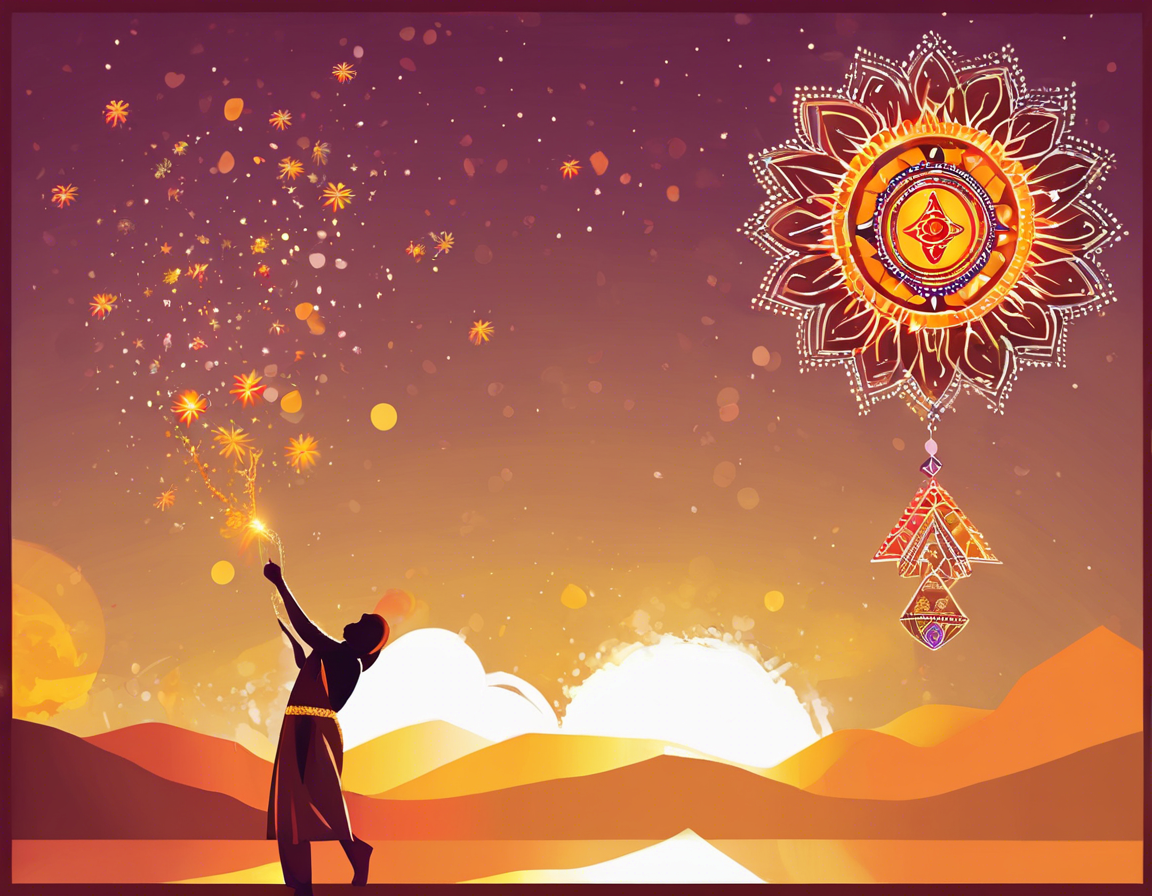Introduction:
In India, Sankranti is a festival that celebrates the harvest season and marks the transition of the Sun into the zodiac sign of Makara (Capricorn). This auspicious occasion is celebrated with great fervor and enthusiasm in various parts of the country. The festival is known by different names in different regions, such as Pongal in Tamil Nadu, Lohri in Punjab, Bihu in Assam, and Makar Sankranti in Maharashtra and Uttar Pradesh.
Significance of Sankranti:
1. Agricultural Importance:
Sankranti holds immense significance for farmers as it marks the beginning of the auspicious period for harvesting crops. It symbolizes the end of the winter solstice and the onset of longer days, which are vital for the growth of crops.
2. Cultural Celebrations:
Apart from its agricultural importance, Sankranti is a festival that brings families together to celebrate and express gratitude for the bounties of nature. People engage in various traditional activities like flying kites, preparing traditional dishes, and exchanging sweets with loved ones.
3. Spiritual Significance:
The festival also holds a significant spiritual meaning. It is believed that during Sankranti, the Sun god transitions into the Makara Rashi (Capricorn zodiac sign), signifying the end of negative energies and the beginning of a phase filled with positivity and prosperity.
Sankranti Celebrations Across India:
1. Pongal in Tamil Nadu:
In Tamil Nadu, the festival is known as Pongal and is celebrated over four days. People prepare a sweet dish called Pongal, made of rice and jaggery, as an offering to the Sun god, and decorated cattle are worshipped as a symbol of gratitude for their role in agriculture.
2. Lohri in Punjab:
In Punjab, Sankranti is celebrated as Lohri with bonfires, traditional dances like the Bhangra, singing of folk songs, and distributing sweets like gajak and rewri among friends and family members.
3. Bihu in Assam:
In Assam, the festival is known as Bihu and is celebrated with traditional dance forms like Bihu dance, feasting on traditional dishes, and seeking blessings from elders for a prosperous year ahead.
4. Makar Sankranti in Maharashtra and Uttar Pradesh:
In Maharashtra and Uttar Pradesh, the festival is celebrated as Makar Sankranti with flying kites, offering prayers to the Sun god, taking a holy dip in rivers, and exchanging til-gul (sesame and jaggery sweets) to symbolize the sweet and bitter experiences of life.
5. Lohri in Haryana and Himachal Pradesh:
In Haryana and Himachal Pradesh, Sankranti is celebrated as Lohri with bonfires, singing folk songs, dancing, and distributing til, gajak, and revri among family and friends.
Healthy Traditions and Practices:
1. Flying Kites:
Flying kites during Sankranti is a popular tradition that symbolizes letting go of past burdens and embracing new beginnings. It also signifies the victory of good over evil and brings communities together in a spirit of joy and celebration.
2. Traditional Cuisine:
Preparing traditional dishes like Pongal, gajak, til-gul, and rewri during the festival not only adds flavor to the celebrations but also highlights the importance of sharing and spreading happiness with loved ones.
3. Charity and Giving:
The festival of Sankranti emphasizes the values of charity and giving back to society. Donating food, clothes, or money to those in need is considered auspicious during this time and helps spread joy and prosperity in the community.
FAQs (Frequently Asked Questions):
1. What is the significance of flying kites during Sankranti?
Flying kites during Sankranti symbolizes letting go of past burdens and welcoming new opportunities and positivity in life. It is also believed to bring good luck and prosperity.
2. Why is til-gul (sesame and jaggery sweet) exchanged during Makar Sankranti?
Exchanging til-gul during Makar Sankranti signifies the sweet and bitter experiences of life and encourages people to embrace both with equanimity. It also symbolizes the importance of sharing happiness and sweetness with others.
3. How is Pongal celebrated in Tamil Nadu?
Pongal is celebrated over four days in Tamil Nadu, with each day having its own significance. People prepare traditional dishes, decorate cattle, offer prayers to the Sun god, and engage in various cultural activities to mark the festival.
4. What are some traditional dishes prepared during Sankranti?
Traditional dishes like Pongal, gajak, til-gul, rewri, and various regional delicacies are prepared during Sankranti. These dishes are not only delicious but also hold cultural significance and are shared with friends and family.
5. What is the spiritual significance of Makar Sankranti?
Makar Sankranti marks the transition of the Sun into the Makara Rashi (Capricorn zodiac sign), signifying the end of negativity and the beginning of positivity and prosperity. It is considered an auspicious time for new beginnings and seeking blessings for a prosperous year ahead.
Conclusion:
Sankranti is a festival that embodies the spirit of gratitude, joy, and prosperity. It brings people together to celebrate the harvest season, indulge in traditional practices, and seek blessings for a fruitful year ahead. The rich cultural diversity and unique traditions associated with Sankranti make it a truly special and joyous celebration for people across India. Wishing you all a Happy Sankranti filled with happiness and blessings!
